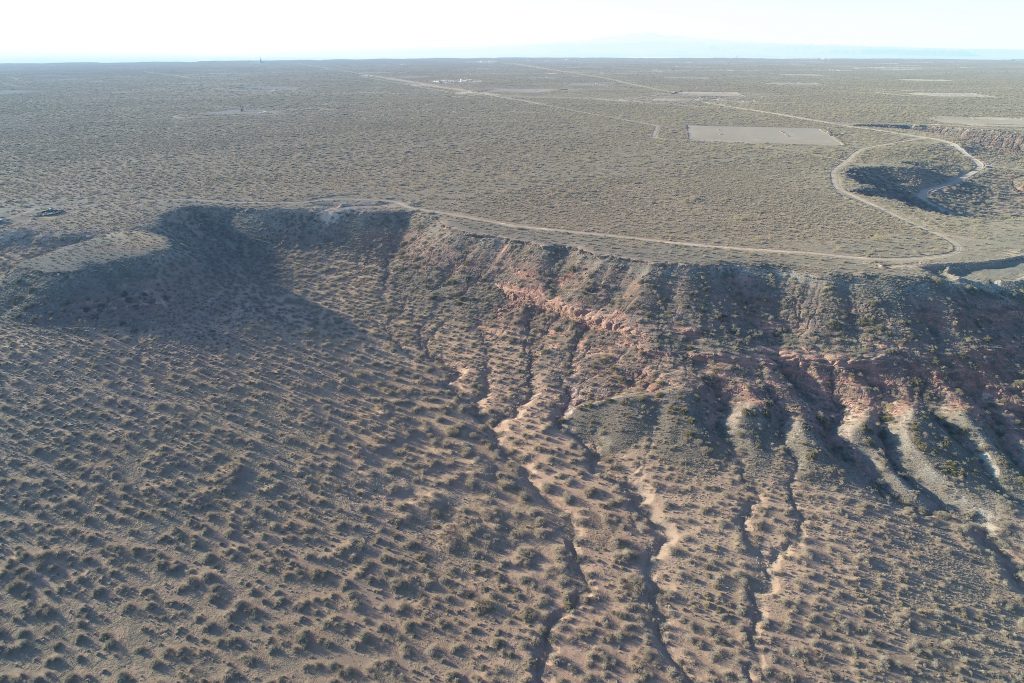Prospecting the land for resources versus mapping an ancestral territory for protection
The Mapuche community Lof Campo Maripe has lived in Añelo, Neuquén Province, since 1927. In 2011 YPF-Repsol announced the discovery of the Vaca Muerta petroleum settlement and its interest in exploiting it. Since then, the community started to suffer a process of harassment for their lands. The partial statization of YPF, the agreement with Chevron to exploit Vaca Muerta in the zone known as Loma Campana, where part of the Lof Campo Maripe’s lands are found, and the absence of query and previous, informed and free consent according to Agreement N° 169 of the International Work Organization accelerated the conflict. The community and the Mapuche Confederation demanded that the right to query was implemented. Without answers, and faced with the acceleration of exploiting processes (YPF-Chevron already has more than a hundred fracking pits), the conflict became cruder in 2014.
On July 19th 2016 the Campo Maripe community closed the way to YPF-Chevron machinery that pretended to make new perforations. The community asked for the 2015 territorial survey to be recognized, as the provincial government had compromised, and that previous requests were made. In September of the same year once again the Tecprol company, hired by YPF, tried to force their way to the territory in the middle of the night for a “seismic exploration” task, process that makes a sort of radiography of the land with sizeable vibrating trucks and explosives to specify hydrocarbure potential. Lof Campo Maripe crossed the path of the machines and managed, that same day, that they retired from the community’s territory.
m7red, in collaboration with Arena Documenta, started a cartographic process of the land that led in 2018 to the creation of O11CE (Once), a space of reflection, exploration and independent research. This process continued in 2019, year in which a network of actors and local groups affected by the situation was developed in conjunction with the Campo Maripe community, the Neuquén Mapuche Confederation, South Petroleum Observatory and the anthropologist Jorgelina Villareal.
In August of the same year m7red added to the collaboration the british group Forensic Architecture, and with them they developed a spatial analysis of the scenario, research that was published in the group’s website. This research consists of a mapping of the land through geolocation, 3D modeling. remote sensing and a data-image complex. The resulting cartography is a mirror, a contrast to the measurements that prospecting tools can make for excavation and mining; one comes from an extractivist and utilitarian posture that conceives of the earth as exploitable capital, an object to posses and from which to extract earnings, and the other conceives it as a process, a scenario and an ecosystem with multiple actors and political vectors interlaced in the territory.
As a result of this process and in collaboration with the british newspaper The Guardian, the video How fracking is taking its toll on Argentina’s indigenous people short documentary was produced as a part of their series The Polluters. This same research was used shortly after by the same publication for the writing of two more articles, K to use finance meant for green energy to support fracking in Argentina and Indigenous Mapuche pay high price for Argentina’s fracking dream. In 2020 The Funambulist magazine published the article Mapuche Tactics Against the Drillers of Vaca Muerta with collaboration from m7red and Arena Documenta, and in 2021 the video created for the guardian was part of the screening exhibit “Agitation Co-op Film Screenings”, from Temple Bar Gallery, Dublin, Ireland.
Credits:
- Collaborators in Oil and Gas Pollution in Vaca Muerta along with Arena Documenta, Forensic Architecture, Lof Campo Maripe community, Neuquén Mapuche Confederation, South Petroleum Observatory and Jorgelina Villarreal. Publication date: October 14th 2019.
- How fracking is taking its toll on Argentina’s indigenous people, The Guardian, 14 de octubre de 2019.
- Indigenous Mapuche pay high price for Argentina’s fracking dream, The Guardian, October 14th 2019
- UK to use finance meant for green energy to support fracking in Argentina, The Guardian, October 22nd 2019.
- Mapuche Tactics Against the Drillers of Vaca Muerta, The Funambulist, August 27th 2020.
- Oil and Gas Pollution in Vaca Muerta, Agitation Co-op Film Screenings, Temple Bar Gallery, Dublin, Ireland, April 20th to July 10th 2021.

